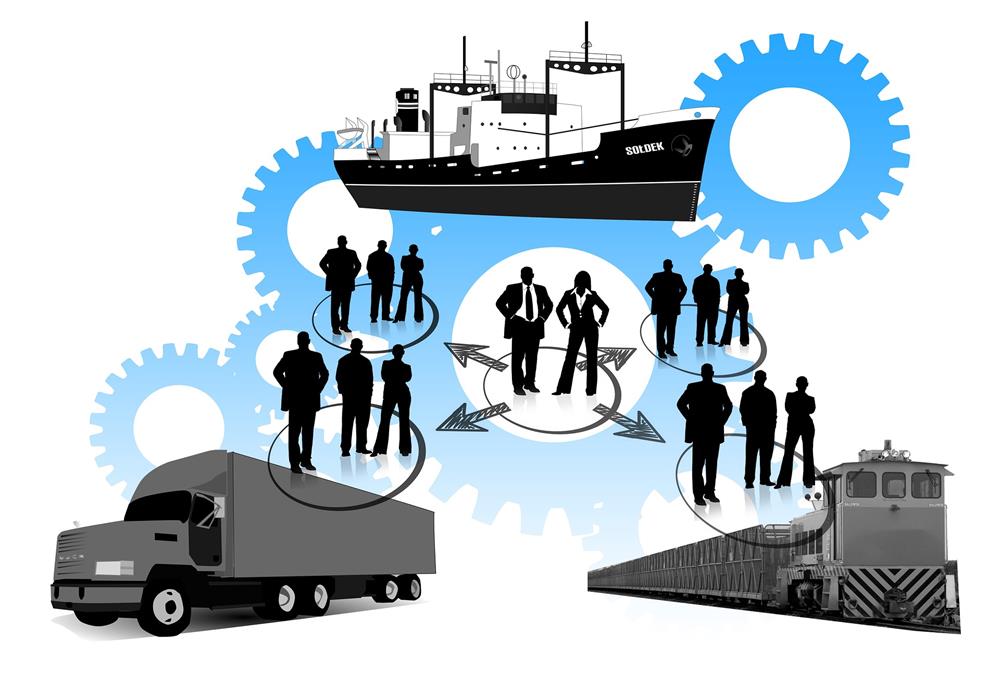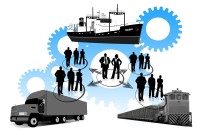- Home
- Business Processes
- Industry Knowledge
- Aerospace Industry
- Automotive Industry
- Banking Domain
- BFSI Industry
- Consumer/ FMCG Industry
- Chemicals Industry
- Engineering & Construction
- Energy Industry
- Education Domain
- Finance Domain
- Hospitality Domain
- Healthcare Industry
- Insurance Domain
- Retail Industry
- Travel and Tourism Domain
- Telecom Industry
- Leadership Skills
- eLearning
- Home
- Functional
- Order to Cash
- What is Order to Cash
What is Order to Cash
Learning objectives for this lesson are: Meaning of Order to Cash Process; Sub Processes under Order to Cash; Process Flow for Order to Cash; Key Roles & Transactions; Key Setups/Master Data Requirements.
Meaning of Order to Cash
- Order to Cash (also known as O2C) manages the life-cycle of a sales process
- This process encompasses the sub processes of receiving and processing customer sales
- A contractual relationship is established with the buyer (This is an Optional step and some businesses need a formal agreement before they can execute orders)
- Orders are received via different sales channels
- Orders are fulfilled through shipping and logistics
- Invoice is generated and booked as Sales
- Debt is recorded and pursued through collections management
- Funds are received and accounted using cash applications
Sub Processes under Order to Cash Functional area:
- Credit Management
- Managing the credit profile of your customer and putting checks and holds on amount of credit that can be extended to one customer
- Order Management (Creation of order/Booking of order)
- The process from taking the order and booking the same in the system
- Order Fulfillment
- Making sure that the firm has the product available that can be shipped to the customer
- Distribution – Shipping and Logistics Management
- Actual shipping of the product to the customer
- Invoicing/Customer Billing – Account Receivable Process
- Raising an invoice to the customer as per the regulatory requirements
- Customer Collections
- Dunning process and reminding customer about outstanding dues and collecting the money
- Cash Application
- Accounting for the cash against a particular invoice
- Dispute Management
- Handling disputes or adjustments arising in the natural course of business
Process Flow for Order to Cash Process
- Sales Quotation
- Providing a quotation about the quality, price and conditions of sale or product
- Sales Order
- Acknowledging the receipt of an order from the customer and its specifications
- Credit Management
- Ensuring the customer is credit worthy and credit can be extended to the customer
- Shipment
- Sending the goods to the Ship To location; and sending the invoice to the bill to location
- Billing/Invoicing
- Sending the invoice to the customer that is fully complaint with the legal framework
- Collections Management
- Reminding the customer, issuing dunning letters and collecting the money
- Dispute Management
- Addressing the disputes or adjustments due to various reasons
- Customer Returns Management
- Handling the goods that have been returned by the customer
- Customer Payments
- Receiving the payments from customers and depositing them in bank
- Cash Application
- Knocking off a particular invoice against the cash or payment that has been received
- Accounting
- Ensuring proper accounting during the process
- Reporting
- Making available the required reports to the management
Key Roles during the process - Order to Cash
- Sales Personnel
- Order Entry and Management
- Account Receivable Accounting
- Finance
- Materials Management
- Partner / Customer Management
- Key Transactions during the
- Order to Cash Process
- Sales Quotation
- Sales Order
- Goods Shipment
- Return from Customer
- Return Material Receipt
- Create Shipments from Orders
- Sales Invoice
- Create Invoices from Orders
- Generate Invoices
Key Setups / Perquisites
Some key master elements or setups are prequiste to this process before transactions can take place in any ERP or system:
- Sales Products
- Prices configuration
- Customers Setup
- Credit Scores/Credit Management/Credit Holds
- Shipping Rules
- Ship to/Bill to Setups
- Sales Document types
- Sales Invoice Formats / Commissions and Accounting Rules
- Taxes on Sales – Tax Setups
- Sales Agreements Setups
- Revenue Recognition Rules
Related Links
You May Also Like
-
Inventory is money, and hence businesses need to perform physical inventory counts periodically to make sure that their inventory records are accurate. The traditional approach to conducting inventory counts is to shut down a facility during a slow time of year to count everything, one item at a time. This process is slow, expensive, and (unfortunately) not very accurate.
-
To stay competitive in today’s tough market, the location of your warehouse is vital. To grow retail business need to offer to customers faster and affordable shipping time, which is dependent on the warehousing location as the location of the warehouse affects the transit time to ship orders to customers.
-
What is a Warehouse & why companies need them?
All organizations hold stocks. In virtually every supply chain, gaps exist between when something is produced and when a customer is ready to buy or receive it. Stocks occur at any point in the supply chain where the flow of materials is interrupted. This implies that products need to be stored during this period of gap.
-
Warehouse management and distribution logistics involve the physical warehouse where products are stored, as well as the receipt and movement of goods takes place. Warehouse management aims to control the storage and movement of products and materials within a warehouse. These operations include the receipting of inwards goods, tracking, stacking and stock movement through the warehouse.
-
One of the warehousing best practices that retailers like Walmart, Amazon, and Target have adopted is known as cross-docking. During this process the inbound products are unloaded at a distribution center and then sorted by destination, and eventually reloaded onto outbound trucks. In real parlance, the goods are not at all warehoused but just moved across the dock (hence the name).
-
Learning objectives for this lesson are: Meaning of Order to Cash Process; Sub Processes under Order to Cash; Process Flow for Order to Cash; Key Roles & Transactions; Key Setups/Master Data Requirements.
-
Resource Planning is the process of planning for expected workload and determining the number of resources required to complete each activity in the warehouse. There are many types of warehouse positions, and they also vary by the employer, the scale of operations and location. Discussed here are generic positions applicable to warehouse management processes.
-
Overview of Third-Party Logistics
Third-party logistics (abbreviated as 3PL, or TPL) is an organization's use of third-party businesses to outsource elements of its distribution, warehousing, and fulfillment services. A third-party logistics provider (3PL) is an asset-based or non-asset based company that manages one or more logistics processes or operations (typically, transportation or warehousing) for another company.
-
Warehouses may seem like a simple, straightforward concept, but they actually include a variety of different types of warehouses that all have their own niche. The type of warehousing that’s right for you depends on your specific industry, location, and needs. From private warehousing, distribution centers, and climate-controlled warehouses, there’s an option to suit every business.
-
After products have been received and passed a quality inspection, they need to be stored so that you can find them when you need them. This process is called putaway. The spot where you store a particular product is called a location. One section of a warehouse might have small locations for light items; another area may have large locations on the floor for heavy items.
Explore Our Free Training Articles or
Sign Up to Start With Our eLearning Courses

About Us
Learning
© 2023 TechnoFunc, All Rights Reserved










